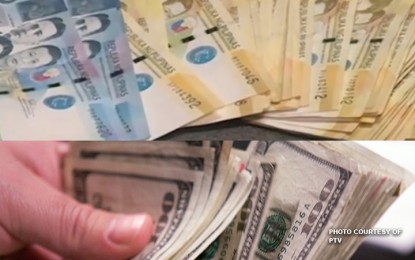
MANILA – Fitch Solutions has revised its 2021 outlook for the peso given the local currency’s recent weakness, primarily traced to the rise in US treasuries and global oil prices.
In a report, the unit of Fitch Group now sees the peso averaging at PHP48.40 against the greenback from its earlier forecast of PHP47.50 against the US dollar.
“We at Fitch Solutions forecast the Philippine peso to remain on a weak footing over the short term as volatility picks up but fundamentals prove supportive,” it said in a report dated March 19 which was released Monday.
Fitch Solutions said the local currency has weakened year-on-year by around 1.2 percent against the greenback as of March 16, 2021.
It said the peso started to depreciate against the US dollar since February 15, 2021 following the rise of US Treasury yields and jumps in oil prices in the international market.
The rise in domestic coronavirus disease (Covid-19) infections also affected investors’ sentiment, it added.
The country registered its record-high new Covid-19 infections on Monday when it rose to 8,019 cases.
“These headwinds are unlikely to abate in the near term, underscoring further peso depreciation,” the report said.
Fitch Solutions expects the peso to remain firm against the dollar because of strong domestic fundamentals.
It sees the country’s current account to remain in surplus this year and this is seen “to bolster the country’s foreign currency reserves and its ability to cover its external debt obligations.”
The Bangko Sentral ng Pilipinas (BSP) forecasts the current account to post a USD9.1-billion surplus this year.
Fitch Solutions also expects the peso to get a lift from the fact that foreign holdings of peso-denominated government securities remain low at 2.8 percent of total outstanding debt as of last February.
For 2022, it sees the average peso-US dollar average at PHP50 because of stronger credit growth, expected loose fiscal stance, and a current account deficit of around 0.4 percent of domestic output.
“Twin fiscal and current account deficits will contribute to a weaker outlook for the peso,” it added. (PNA)
